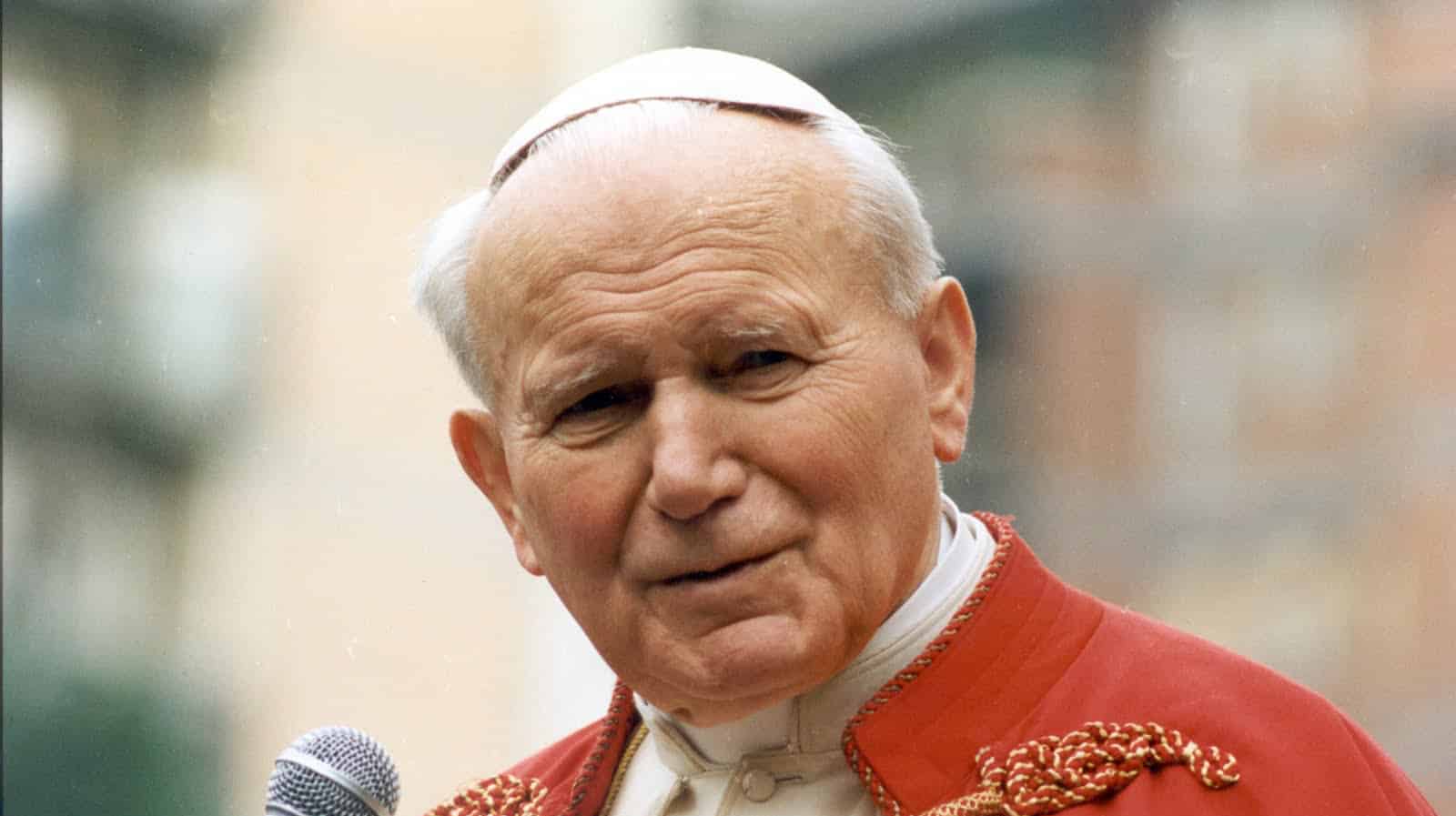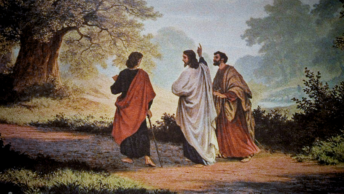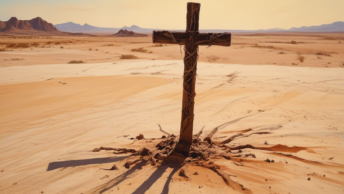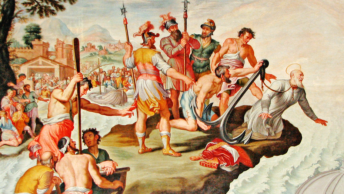The opening refrain to one of Frank Sinatra’s greatest hits in the 1950s was Love and Marriage! They go together like a horse and carriage. The same thought may apply to the inner relationship between Faith and Reason. One cannot legitimately have one without the other. Current headlines paint a different picture. A mutually destructive war between these kindred traits has been a delicate subtext in the heated debate over embryonic stem cell research, cloning, and genetic engineering.
The decades-long controversy of so-called man-made Climate Change, originally known as Global warming is a debate of a different stripe. The sides that have been drawn up do not fit the templates of the centuries-long debates. They seem to consist of religious and political traditionalists, ordinarily germane to the right side of the spectrum while their adversaries generally occupy the religious and political Left of the spectrum.
The mainstream media has consistently attempted to paint the Catholic Church into a corner occupied by superstitious malcontents who forfeited their place at the intellectual banquet table over 500 years ago. Pope John Paul II addressed this issue many times during his papacy. The basic theme of his 1998 encyclical letter, Fides Et Ratio (Faith and Reason) is that faith and reason are like two wings on which the human spirit rises to the contemplation of truth. They are an indivisible team that God has placed in the human heart.
Like birds of a feather, it is incumbent upon men and women to use their reason, tempered by faith in search of the truth. The sainted Pope believed a rejection of revealed truth is also a rejection of reason. Absolute truth serves as the true lodestar of men and women as they strive to make their way amid the pressures of an immanentist habit of mind and the constrictions of a technocratic logic.
One of the best-kept secrets in the debate is that modern science owes a tremendous debt to the Catholic Church for its long dedication to scientific inquiry, especially during the much maligned Middle Ages. Saint Albert the Great (c.1200- 1280) was a Dominican who taught at the University of Paris. He was one of the most famous precursors of modern science and a renowned naturalist whose prodigious output spanned physics, logic, metaphysics, biology, psychology, and many earth sciences. In 1941 Pius XII named him the Patron of the Natural Scientists.
According to Thomas Woods’ illuminative book, How the Catholic Church Built Western Civilization (2005), St. Albert and his student St. Thomas Aquinas (1225-74) were the first to recognize the autonomy of both faith and science. At the same time they insisted that these two traits were organically linked in a Holy Alliance. They believed that science depends on faith, and faith is reinforced through science. Aquinas argued that faith and reason were not at odds because both were based on the one absolute truth of the existence of God. Pope Leo XIII underscored this idea when he wrote: Just when St. Thomas distinguishes between faith and reason, he unites them in bonds of mutual friendship, conceding to each its specific rights and to each its specific dignity. In 1996 Pope John Paul II reiterated this when he said: Truth cannot contradict truth!
According to Father Stanley Jaki, O.S.B., an outstanding physicist who bridges the gap between science and religion, St. Thomas struck a happy balance between God’s freedom to create any kind of universe and His consistency in governing the universe He did create. His reasoned approach avoided speculation that was divorced from experience. St. Thomas concluded that in God’s universe God was intelligible and orderly. Although God possesses the raw power to bring about random selection and anarchy in the physical world, it would be inconsistent with His orderliness and rationality to behave in such a way. St. Thomas concluded that any scientific inquiry without a metaphysical faith is fruitless.
Father Jaki emphasized the fact that the Christian tradition, from its Old Testament prehistory through the High Middle Ages, conceives of God and by extension his creation as orderly and rational. Throughout the Bible the orderliness and regularity of natural phenomena is described as a reflection of God’s goodness, beauty, and order.
Another Catholic scientist was Roger Bacon, a Franciscan who taught at Oxford in the 13th century and was renowned for his work in optics and mathematics. He is considered to be a forerunner of the scientific method. He wrote diligently about the philosophy of science and the importance of observation and experimentation.
No episode in history has done more to sully the relationship between Faith and Reason than the Church’s condemnation of Galileo. It is the one stock argument used to show that science and religion mix like oil and water. The Galileo affair is largely responsible for the widespread belief that is festering in more recent times with embryonic stem cell research, that the Church has always obstructed the advance of scientific inquiry and discovery.
The issue revolved around the popular theories of Polish astronomer, Nicholas Copernicus (1473-1543), who relied heavily on Aristotle and Ptolemy (87-150 AD), a brilliant Greek astronomer who posited a geocentric universe. Copernican astronomy shared with its Greek precursors perfectly spherical heavenly bodies, circular orbits, and constant planetary speed. The main difference was that he placed the sun, rather than the earth, at the center of the system. His heliocentric model posited a moving earth orbiting the sun, as did the other planets. In 1531 Pope Clement VII and several Church scholars and academics urged him to publish his theories.
Protestants vehemently attacked him because of his variance with their literal interpretation of the Bible. The Catholic Church remained neutral until the Galileo case. In addition to his work in physics, Galileo Galilei (1564-1642) made several astronomical observations that differed from the Ptolemaic system. He saw mountains through his telescope on the moon, thus undermining the traditional belief that planets were perfect spheres. He discovered four moons that were orbiting Jupiter, demonstrating, not only the presence of celestial phenomena of which Ptolemy and the ancients had been unaware, but also that a planet moving in its orbit would not leave its satellites behind.
Initially churchmen welcomed his revisions of traditional scientific teaching. The Church treated his idea as a working hypothesis, not a proven fact. Galileo believed the Copernican system was absolutely true. Several influential churchmen suspected that he might be right but waited for more proof.
Galileo arrogantly stepped over the line with his accusation that the Biblical texts which contradicted his scientific data had to be reinterpreted in light of his findings. The scientist had cast himself afloat from the safe haven of the scientific harbor into the stormy waters of theological dogma. It was his stubborn insistence on the literal truth of his positions that caused his conflict with the papacy, not his theories alone.
In 1616 Galileo agreed to teach the Copernican system as a hypothesis. Pope Urban VIII spoke of Galileo as a man whose fame shines in the sky and is spread over the whole world. By 1633 Galileo had lapsed into his own stubborn belief in his theory as proven fact. He was condemned as a suspect of heresy and was ordered to desist from any further publication on Copernicanism. While under house arrest, Galileo faithfully relented and published many more acceptable scientific treatises before his death in 1642. The scandal went unresolved until now St. Pope John Paul II attempted to reconcile the Church and Galileo in 1979. The Galileo affair inevitably led to a more severe rift between Church teachings and the increasing skepticism of the West. The Age of Reason inspired the West’s dedicated attempt to chase God, not just from the marketplace but also from the laboratory.
It fell to philosopher/mathematician Rene Descartes (1596-1650), and his dictum Cogito, ergo sum! (I think, therefore I am!), to thoroughly upset traditional epistemology. Descartes reduced man from a knower who is united with the cosmos to a thinker, thrown back entirely on his own resources. His teachings condemned man to an island of chimerical isolation that dislocated him from transcendent truth. His pure rational philosophy produced an intellectual schism that presaged many of the future errors later popes would condemn in the 19th and 20th centuries. As Pope John Paul II warned in Fides Et Ratio: Woe to humanity should it lose the meaning of truth, the courage to seek it, the confidence of finding it!
This paradox is both dramatic and startling. Descartes, who was a Catholic, eroded the foundations of science by dissolving the necessary faith a scientist needs in order to be assured that the universe is knowable. The scientist must make an initial act of faith that the laws of the world are both intelligible and consistent. If not, he will despair of the universe’s law as being no more permanent than the croquet game in Lewis Carroll’s allegory Alice in Wonderland where the rules of the game changed at the whims of the Queen. It was left to the 19th century to witness the rise of the positivist sciences and the increased religious doubt about God and traditional religion. This development was crystallized with the publication of Charles Darwin’s The Origin of the Species in 1859.
Ironically, it is the high priests of science who treat Darwin’s theories with the dogmatic reverence that is usually reserved for religious devotions. These same Lords of Modern Science who still revere Darwinism as scientific dogma, are doing so in the 21st century with (man-made) Global Warming, also known as Climate Change. As in the case of Galileo, they are doing so without any real sufficient demonstrable proof, to the exclusion of any heretical possibility, such as creationism or intelligent design. Scientists have adorned their creed in the holy robes of hubristic certainty that would make a Muslim jihadist shout fanatic. According to the columnist Joseph Sobran: The evolutionist creed is that there is no God and Darwin is his prophet.
The Church had confronted materialistic ideas, similar to Darwin’s in the past. In the 4th century, St. Basil the Great admonished his flock, not to say that anything automatically came into being by itself. Nothing springs out of disorder, out of infinity, just by chance. Another giant of the era, St. John Chrysostom observed:To say that creation sprang from pre-existent matter, and not to acknowledge the Creator who created everything out of nothing–this is a mark of the lowest form of stupidity.
The 20th century solidified the rejection of a Divine participation in creation. The Big Bang theory that a primordial explosion set evolution in motion contended it had supplied the final piece in the riddle of creation. Yet despite this century-long assault on the ontological underpinnings of the universe, the tide has inexorably started to shift its momentum. New discoveries in biology and genetics have forced honest scientists to reconsider the nihilism that has surrounded their discipline for generations. Many now conclude that the world and the universe are too vast to be the result of a random accident. There is much evidence now to support the belief that a higher intelligence engineered the process.
Probably the most logical scientific proof for the existence of God is the DNA molecule, (deoxyribonucleic) discovered by Francis Crick, James Watson, and Maurice Wilkins in the 1950s. DNA is an essential molecular component that is found in every form of known life. It contains tiny blueprints for the development of all individual life. One can logically assume these blueprints had a designer. As A. E. Wilder-Smith, one of Europe’s leading and versatile scientists, concluded, Since life is at its core a chemical message system, the origin of life is the origin of information…Given the information in a DNA molecule, it is certainly reasonable to posit that an intelligent agent made it.
Intelligent design establishes that life and living things show signs of having been designed by an intelligent agent. While its roots date back to Socrates and Plato, Oxford scholar F.C.S. Schiller first used the term in an 1897 essay, which stated it will not be possible to rule out the supposition that the process of Evolution may be guided by intelligent design. Intelligent design’s approach is basically scientific. It is not creationism, which insists on the literal interpretation of the Bible. Intelligent design rightfully defers to philosophy and theology to identify the designer. As Albert Einstein said: Science without religion is lame, religion without science is blind.
Critics of intelligent design have put on their war paint. They have challenged intelligent design under the pretext that it is simply a sophisticated conspiracy to sneak creationism into the public schools. And since the U.S. Supreme Court in the 1987 case, Edwards v. Aquillard, struck down a Louisiana law promoting the teaching of creation science in public school science classes, it would more than likely strike down intelligent design under the same reasoning. Catholic scientists, such as biologist Richard Sternberg, have even lost their jobs over this issue. He contends that he was harassed from his position as research associate at the Smithsonian Museum of Natural History because he dared to challenge the reigning Darwinian paradigm.
The Seattle-based Institute is a think-tank, which is largely responsible for advancing the idea of intelligent design. Since its inception in 1990, the institute has served as a clearinghouse for intelligent design, having attracted over 400 scientists, including 70 biologists, who have signed a petition revealing their skepticism of Darwinism. Its director, Stephen C. Meyer, compares the situation to that of an archaeologist, who discovers an ancient inscription on a wall. Elementary logic would have him conclude that an intelligent being had written the inscription. In 1996 Pope John Paul II, in his persistent desire to effect the reconciliation of faith and reason, offered his reasonable opinion that the linchpin of this debate, evolution, was not inconsistent with Catholic teaching. Since then the mainstream media have periodically spun his opinion to underscore Darwinian materialism and with that, link the Church with the self-rebuking acceptance of a science devoid of God. It was left to the Cardinal Archbishop of Vienna, Christoph Schonborn, in the July 7, 2005 op-ed piece for the New York Times, Finding Design in Nature to put the fiery storm of science and religion in its proper perspective.
The Cardinal emphatically stated that: Evolution in the sense of common ancestry might be true, but evolution in the neo-Darwinian sense–an unguided, unplanned process of random variation and natural selection–is not. Any system of thought that denies or seeks to explain away the overwhelming evidence for design in biology is ideology, not science. In an intellectual atmosphere that seemingly has lost or forfeited the ability to make critical distinctions, his article shines like a beacon of clarity that fully illuminates what Catholics can believe and what they must believe.
The fact of the matter is that even were the Left presented with impeccable facts and scientific data they would deny it without a moment’s hesitation, underscoring the obvious conclusion that in the battle between Faith and Reason, the Left is the only combatant who denies reason, relying almost totally on its faith in the diminution of mankind and the advancement of a new world order, comparable to Orwell’s prophetic book, 1984








